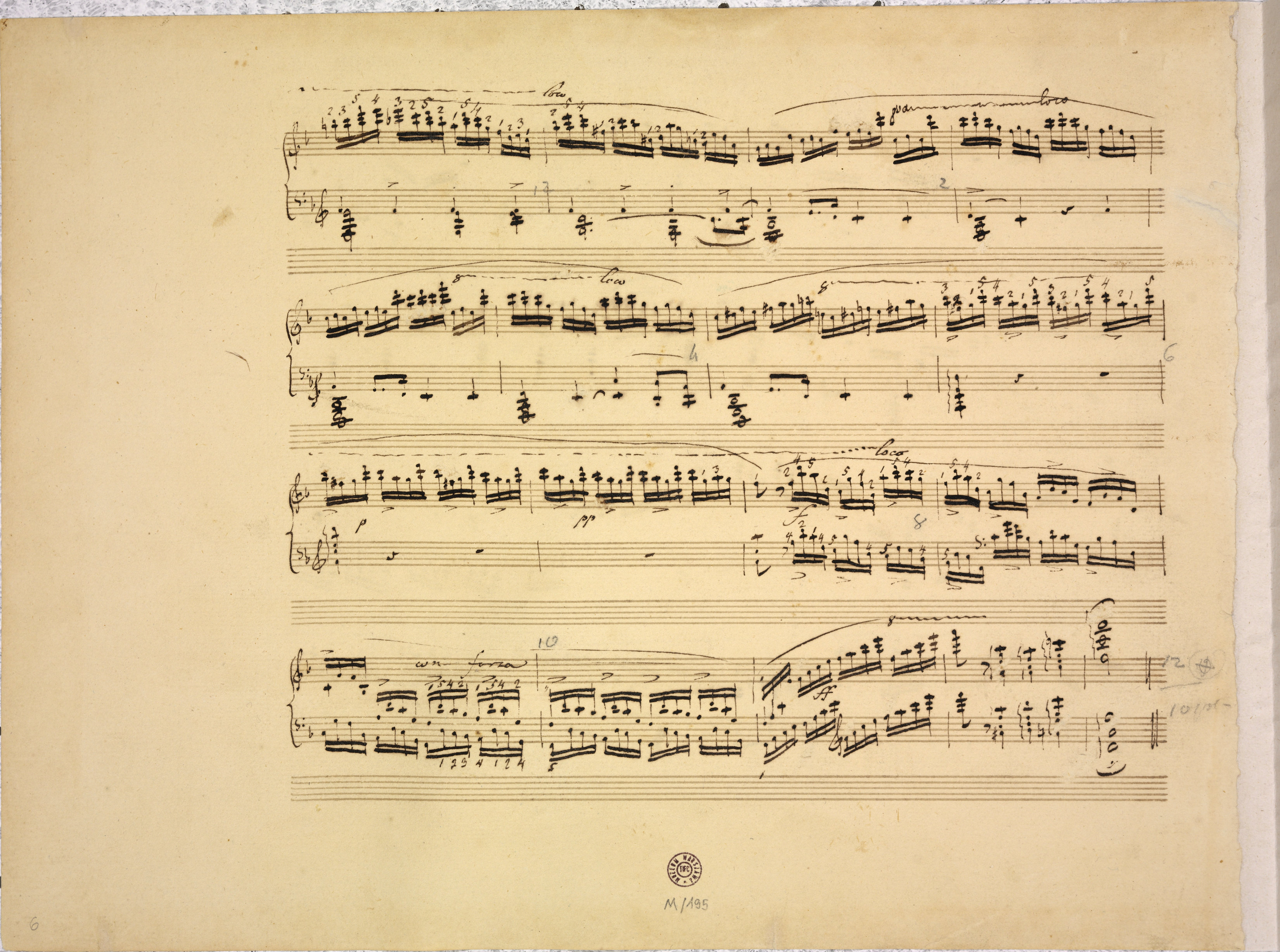



In the main text we give the last chord in the L.H. after A (→FE→EE3). The authenticity of this version is beyond any doubt, while the entire ending was carefully refined by Chopin (see the note to bars 94-95). The version of GE (repeated in EE4 after GE3) appeared in a form of a correction already after the 1st version of GE1 had been printed (there are visible traces of changes in print). Despite the fact that there is a number of serious arguments against Chopin's possible influence on the form of GE1 (see the characteristics of GE1), the issue of authenticity of the version of GE cannot be considered as finally settled, as it seems to be convenient to some extent:
- f1 constituted a natural resolution for the leading note e1 from the previous bar; generally, the combination of the dominant chord in the L.H. in bar 94 with the final tonic in the version of GE is the same as the combination of these chords in bars 14-15;
- the change may be considered as a completion of several corrections of the chords, introduced in A and FE.
Of course, the above observations alone cannot determine the issue of authenticity of the version of GE. They also do not give any answer to the question why Chopin – if it was him that was behind this change – did not introduce it in FE, e.g., in FE2, in which a few additions were performed in this Etude, among others, in the previous bar.
Compare the passage in the sources »
category imprint: Differences between sources
issues: EE revisions, GE revisions
notation: Pitch



